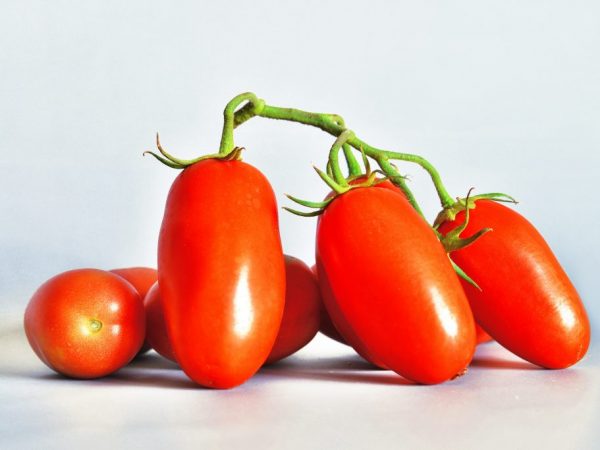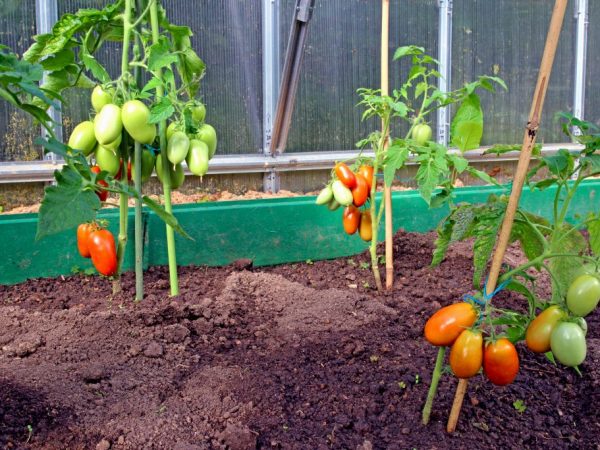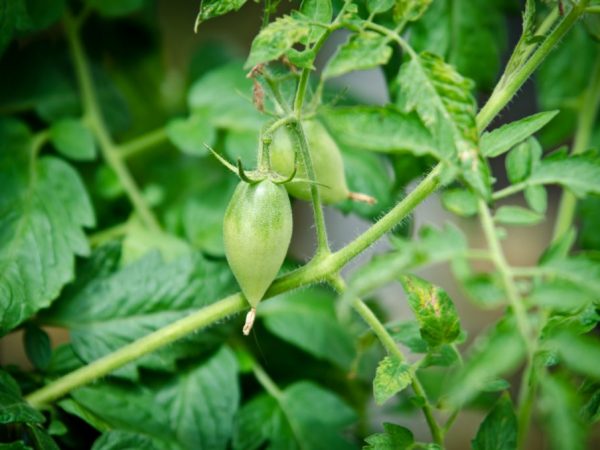Description and characteristics of the Siberian Troika tomato variety
Tomatoes are one of the most beloved vegetable crops. Since they are demanding on heat, moisture, soil quality, they cannot be cultivated everywhere. The Siberian Troika tomato is suitable for regions with an unfavorable climate for growing tomatoes.

Description and characteristics of the Siberian Troika tomato variety
Bred by Russian breeders, the Siberian Troika tomato was entered in the State Register of the Russian Federation in 2004 for growing in the open field. You can buy the seeds of these tomatoes from the companies Siberian Garden, Biotekhnika, Russian Seeds.
Variety characteristic
The official description describes the Siberian troika tomato bush as low - 50-70 centimeters. The plant belongs to the standard varieties, i.e. has a poorly developed root system with a powerful branched crown. The leaves are small, dark green. Inflorescences usually form above the ninth leaf, then after 2 leaves.
Fruit characteristics:
- The fruits are pepper-shaped, bright red, 12-15 centimeters long.
- They can reach a weight of 200-250 grams.
- Gardeners note excellent taste: the sweetish taste does not disappear even with a lack of sun and heat during cultivation.
- The berries are dense, fleshy, do not crack.
In the description, manufacturers position the variety as mid-season. Differs in high yield - up to 6 kilograms per square meter. With good care, you can get 5 kilograms per bush.
Application
In 2014, the Siberian Troika tomatoes were recognized as one of the best varieties for growing outdoors in areas that have unsuitable conditions for growing tomatoes. Vegetable growers are attracted by the combination of a small bush height with a good yield.
Taste qualities make this tomato indispensable for making salads, snacks, sandwiches. Since the taste does not change during heat treatment, and the skin does not crack, the fruits are preserved whole for the winter. Tomato juices and mashed potatoes are also prepared.
Advantages and disadvantages
The characteristics and properties of the variety proposed by the breeders are confirmed by the observations of professional and amateur vegetable growers. Everyone notes the following virtues of culture:
- large fruit size;
- compact bush;
- great taste of tomato pulp;
- high productivity;
- resistance to most diseases;
- suitable for growing both in the open field and in the greenhouse, since it tolerates heat well;
- the possibility of long-term storage of ripe fruits in a raw state.

The fruits are delicious
This tomato variety has almost no flaws. One of them: with high resistance to most diseases, the Siberian troika tomato is prone to apical rot disease.
Growing features
It takes 110-115 days for a plant to develop from sowing seeds to harvesting. Seeds are sown about 60-65 days before the intended planting in the ground.
Seed preparation and planting
If you plan to lay the beds in early June, then sowing should be done in mid-March. Before sowing, the seeds are heated in a tissue bag on a battery, gradually increasing the temperature. The soil is also specially prepared: it should be loose, fertile, preferably with the addition of peat. To ensure disinfection, it can be baked in the oven.
Before sowing, the seeds are germinated in a warm, humid place (a piece of cloth, a napkin, between the layers of which you can lay seeds, will do). Germination takes three days on average. Before sowing, the seeds can be placed in a solution of potassium permanganate (potassium permanganate) for dressing.
For sowing, special cassettes or containers are used; they can be pre-treated with a manganese solution. It is imperative to take care of the drainage (small pebbles, egg shells) and the outflow of water. Moisten the soil, and then cover the seeds to a depth of 1.5-2 centimeters.
Dive seedlings
Be sure to dive the plants after the appearance of two true leaves. It depends on how high-quality the seedlings will be, which, ultimately, will determine the ripening time, quantity and quality of the crop. When dived correctly, the central root is pinched to form a branched, strong root system.
The dived seedlings are watered, fed with organic and mineral fertilizers. Plants are responsive to diluted manure or chicken droppings. For the first watering, you can use a weak solution of potassium permanganate.
Planting plants in open ground
Before planting in open ground, the seedlings must be hardened in order to avoid long-term adaptation of plants. At the same time, watering is stopped, the room is periodically ventilated or the seedlings are taken out to a cool place for 10-15 minutes, gradually increasing the duration of the procedure.
Bushes are planted at a distance of 40-45 cm. As they grow, pinching is carried out: all processes are removed from the root to the first inflorescence. The bush is formed in such a way as to ensure amicable ripening and good quality of the harvest.
Diseases and pests
Many diseases can be prevented by observing the correct crop rotation. You can not plant tomatoes in the beds that were occupied in the previous year by other representatives of the nightshade family: potatoes, peppers, eggplants.

Caring for tomatoes will not cause you any difficulties
Routine tomato care (weeding, loosening the soil) will help avoid many diseases and pests. It is not necessary to use insecticides when the culture is affected by aphids or mites, especially during the period of fruit ripening. You can use homemade preparations:
- soap solution (100 grams of laundry soap per 1 liter of warm water);
- ammonia solution (50 ml per bucket of water);
- infusion of onion peel (half a bucket of peel is poured with 10 liters of hot water and allowed to brew for a day, filter before use).
It is advisable to process the plants in the evening, in calm weather, after watering. If necessary, repeat the procedure in a week.
As a prophylaxis for some diseases and damage to bushes by pests, sifted ash can be used. After heavy rains, in cool weather leaves are “powdered” with it. At the same time, ash acts as a mineral fertilizer, since it contains potassium, calcium, magnesium and sodium.
Reviews of vegetable growers
Reviews of the Siberian Troika tomato basically confirm the quality of the variety contained in the description of the manufacturing companies. Most vegetable growers, summer residents note the excellent taste of the fruit - "by 5 points." Positive reviews come from gardeners living in different regions of Russia: Leningrad, Moscow, Voronezh, Kemerovo regions, as well as northern Kazakhstan. Vegetable growers of the Orenburg region consider this variety of tomatoes ideal for the climatic conditions of their region.
However, it has been observed that tomatoes can become bland and watery at low summer temperatures. Depending on the growing conditions, the harvest may be slightly delayed, which is why some experts classify it as a medium late variety. There are reviews about the Siberian Troika tomato, in which vegetable growers do not agree with the statement about the high yield of the variety, characterize it as average.
Summer residents and gardeners report the excellent results of growing the Siberian troika: some owners received fruits weighing about 350 grams, someone from their own experience was convinced of the unpretentiousness of the variety, many received a high yield on time.
Conclusion
The Siberian Troika is a tomato variety that has shown itself to be positive in climatic conditions that are not well suited for growing this heat-loving plant. In recent years, a rich practical experience has been accumulated in its agricultural technology.
Professionals and hobbyists alike have found ways to increase yields and fight disease. Gardeners argue that the small problems that arise when growing these tomatoes compensate for their main advantage - excellent taste (someone even caught notes of strawberries in it!). Definitely worth a try.


